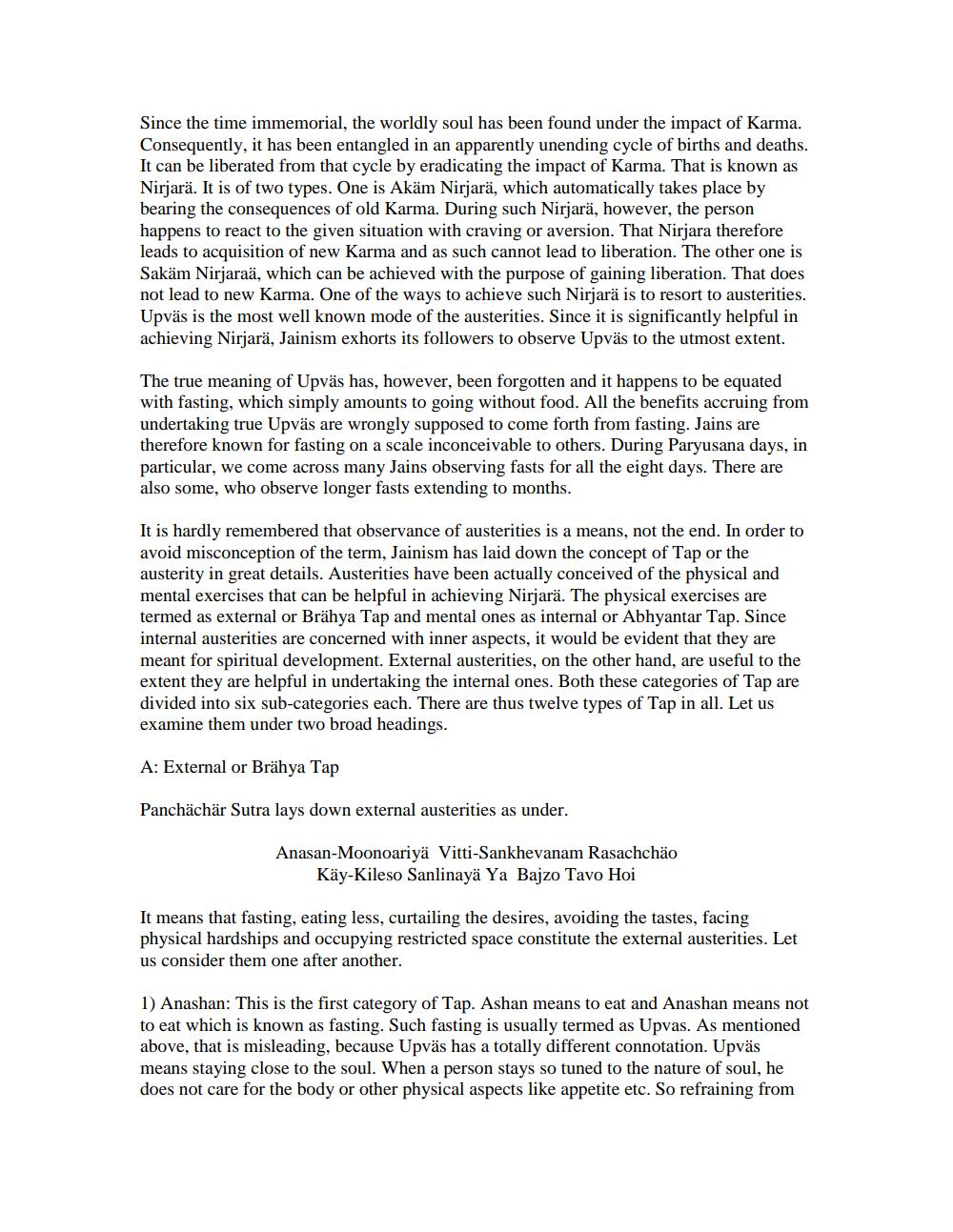________________
Since the time immemorial, the worldly soul has been found under the impact of Karma. Consequently, it has been entangled in an apparently unending cycle of births and deaths. It can be liberated from that cycle by eradicating the impact of Karma. That is known as Nirjarä. It is of two types. One is Akäm Nirjarä, which automatically takes place by bearing the consequences of old Karma. During such Nirjarä, however, the person happens to react to the given situation with craving or aversion. That Nirjara therefore leads to acquisition of new Karma and as such cannot lead to liberation. The other one is Sakäm Nirjaraä, which can be achieved with the purpose of gaining liberation. That does not lead to new Karma. One of the ways to achieve such Nirjarä is to resort to austerities. Upväs is the most well known mode of the austerities. Since it is significantly helpful in achieving Nirjarä, Jainism exhorts its followers to observe Upväs to the utmost extent.
The true meaning of Upväs has, however, been forgotten and it happens to be equated with fasting, which simply amounts to going without food. All the benefits accruing from undertaking true Upväs are wrongly supposed to come forth from fasting. Jains are therefore known for fasting on a scale inconceivable to others. During Paryusana days, in particular, we come across many Jains observing fasts for all the eight days. There are also some, who observe longer fasts extending to months.
It is hardly remembered that observance of austerities is a means, not the end. In order to avoid misconception of the term, Jainism has laid down the concept of Tap or the austerity in great details. Austerities have been actually conceived of the physical and mental exercises that can be helpful in achieving Nirjarä. The physical exercises are termed as external or Brähya Tap and mental ones as internal or Abhyantar Tap. Since internal austerities are concerned with inner aspects, it would be evident that they are meant for spiritual development. External austerities, on the other hand, are useful to the extent they are helpful in undertaking the internal ones. Both these categories of Tap are divided into six sub-categories each. There are thus twelve types of Tap in all. Let us examine them under two broad headings.
A: External or Brähya Tap
Panchächär Sutra lays down external austerities as under.
Anasan-Moonoariya Vitti-Sankhevanam Rasachchäo
Käy-Kileso Sanlinaya Ya Bajzo Tavo Hoi
It means that fasting, eating less, curtailing the desires, avoiding the tastes, facing physical hardships and occupying restricted space constitute the external austerities. Let us consider them one after another.
1) Anashan: This is the first category of Tap. Ashan means to eat and Anashan means not to eat which is known as fasting. Such fasting is usually termed as Upvas. As mentioned above, that is misleading, because Upväs has a totally different connotation. Upväs means staying close to the soul. When a person stays so tuned to the nature of soul, he does not care for the body or other physical aspects like appetite etc. So refraining from




